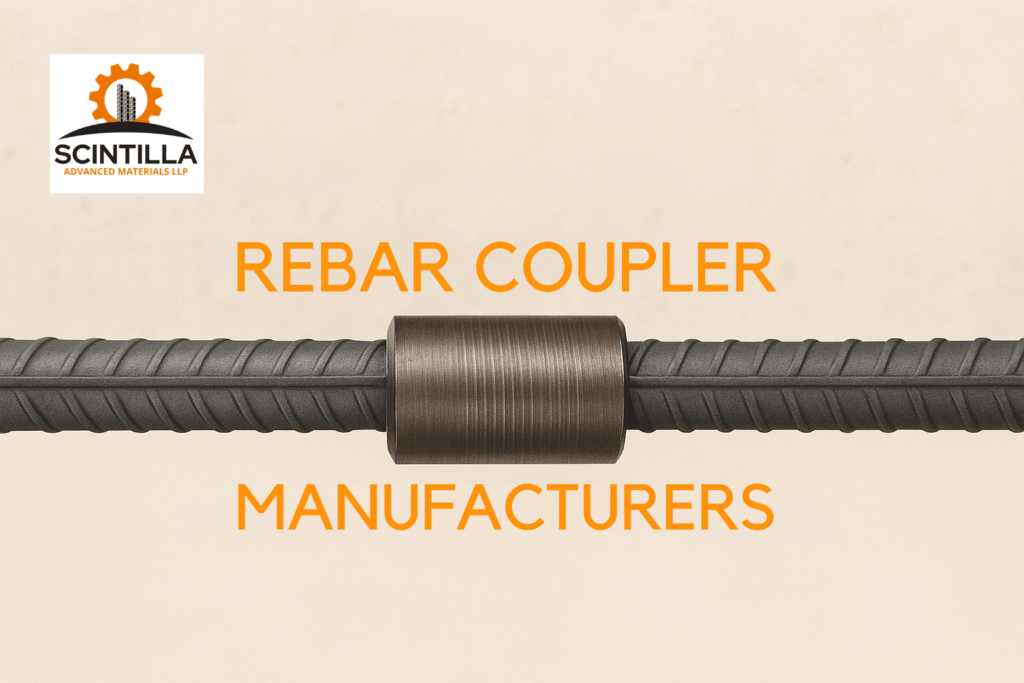India is increasingly urbanizing and expanding cities. Thus, earthquake-resistant structures are more necessary than ever. North and northeastern India is prone to earthquakes, which are damaging to persons and property. In this situation, rebar couplers have become an essential part of buildings that can withstand earthquakes. Rebar coupler manufacturers in India are the first to create and make rebar coupling systems that make buildings and infrastructure more resistant to earthquakes.

Understanding Seismic Demands on Reinforced Structures
During an earthquake, ground shaking exerts varying stresses on a building. These stresses stress the joints, especially where the support bars join. When steel bars are merged in traditional lap splicing methods, weak spots can appear in the structure. These gaps use more steel and crowd regions, making concrete compacting harder.
In earthquake-prone areas, these defects can make structures unstable and collapse badly. Thus, building rules and engineering practices emphasize reinforcing systems to move loads steadily and strongly. This is where rebar couplers are better than other options.
Why Rebar Couplers Are Ideal for Earthquake Zones
Couplers for rebar make a mechanical link between support bars so they don’t have to be overlapping. These connections allow for straight axial load transfer, which makes sure that stress stays in the same place along the axis of the bar. In seismic zones, where sudden and frequent load reversals happen, this continuity is essential.
Rebar coupler manufacturers in India have made high-performance couplers that are specially made for use in seismic situations. The engineers behind these goods made sure they met or went beyond the requirements of IS 16172 and other international standards that apply. They are tested for fatigue resistance, cyclic loading, and high tensile strength. All of these are important for making sure they can survive earthquakes.
Contributions of Indian Manufacturers to Seismic Safety
Indian companies are now making rebar couplers that are just as good as foreign brands because they use better testing and manufacturing technologies. To make sure their products are accurate and last a long time, many of these companies have bought automatic threading machines, high-grade alloy steel, and testing labs that they keep in-house.
Indian suppliers also work closely with structural engineers, architects, and builders to create coupler solutions that are specifically made for buildings that can withstand earthquakes. Some makers even make specialized items like position couplers and transition couplers that are very helpful for seismic detailing and making changes to old buildings.
To make it feel like an earthquake, top Indian manufacturers also do full-scale tests that include pull-out tests and cycle tests. In places where seismic pressures are strongest, like beam-column joints, foundation piles, and shear walls, these results help prove that their couplers can be used there.
Advantages Over Traditional Splicing Methods
When building to withstand earthquakes, the even distribution of load is significant for how the structure acts. This level of consistency isn’t always attainable with standard lap splicing, especially during earthquakes. Overlapping steel makes the building heavier than necessary, making it shake more easily in an earthquake.
Rebar couplers make the core of the building more compact and efficient. They also improve concrete flow around rebar and reduce congestion. It strengthens and speeds up construction, which is perfect for cities that need things done quickly.
Conclusion
The Indian building industry is becoming more modern, and mechanical splicing will play a bigger part in both private and public infrastructure. Changes to building rules and seismic design codes are making it easier for people to use rebar couplers. In response, Indian makers are providing engineered, low-cost, and code-compliant options that directly improve the safety of structures. India is taking the lead in making buildings safer and cities smarter by using rebar couplers as the central part of earthquake-resistant design. Engineers, developers, and builders who work in places that are prone to earthquakes must choose trustworthy couplers from Rebar coupler manufacturers in India. This is not only a technical choice but also a fundamental approach to protect the future. Scintilla is committed to making products that meet the highest international standards by focusing on new ideas and precise engineering. These products provide smooth connections for important building projects.


